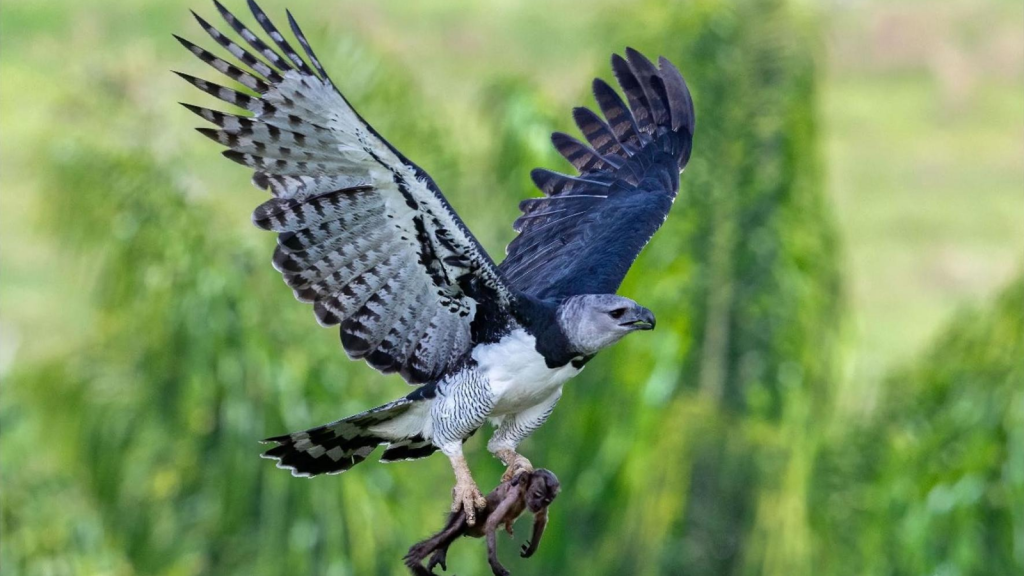The harpy eagle is a magnificent creature that captures the imagination of nature lovers worldwide. With its imposing size and fierce appearance, this bird of prey stands out as a true wonder of the animal kingdom. Found in the rainforests of Central and South America, the harpy eagle has long been revered by indigenous cultures and continues to fascinate scientists and bird enthusiasts alike. Despite its legendary status, there’s still much to learn about this incredible raptor. Here are 14 surprising facts that showcase the unique qualities of the harpy eagle.
Their Talons Are Bigger Than a Grizzly Bear’s Claws
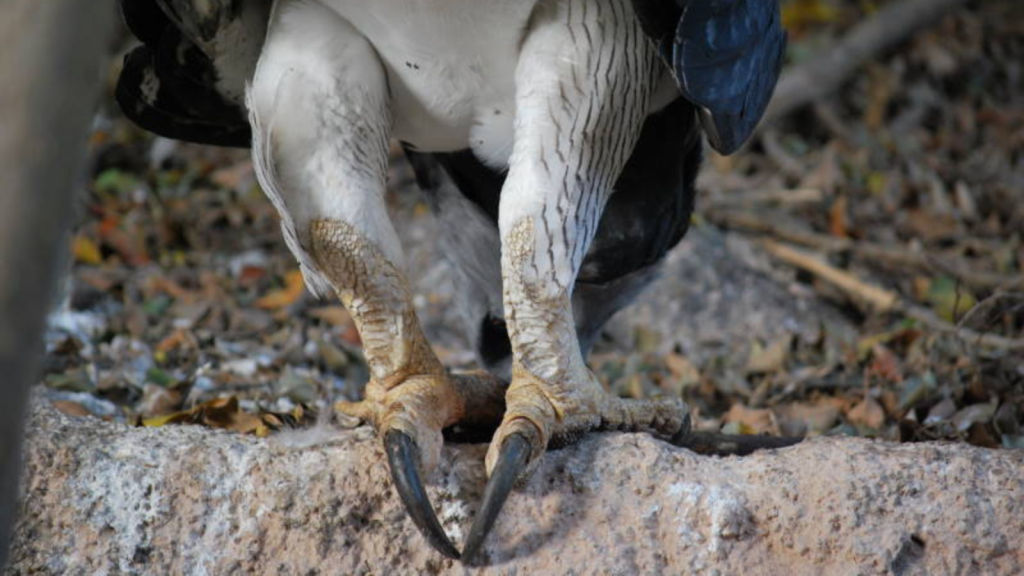
Harpy eagles boast incredibly powerful talons that can grow up to 5 inches long. These massive claws are larger than those of a grizzly bear and can exert a crushing force of up to 530 pounds per square inch. This formidable weaponry allows them to snatch up prey as large as monkeys and sloths with ease. The rear talon is particularly oversized, often reaching 3-4 inches in length, and is used to pierce vital organs of their prey.
They Have a Distinctive ‘Crown’ of Feathers
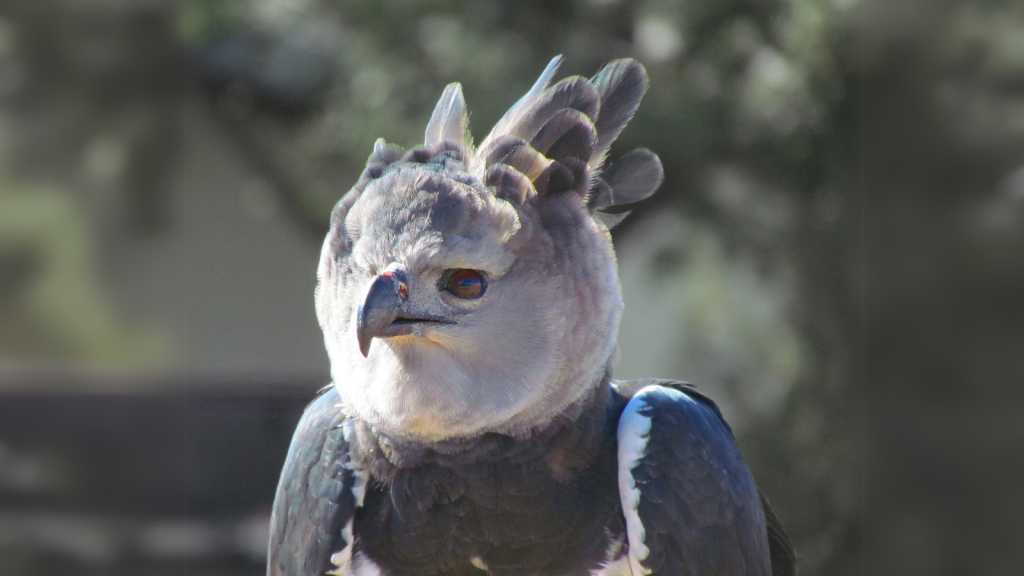
One of the harpy eagle’s most striking features is its crest of feathers atop its head. These feathers can be raised or lowered at will, giving the bird an almost regal appearance. When threatened or excited, the harpy eagle can fan out these feathers, creating an impressive display that makes it look even larger and more intimidating. This crest also helps to break up the bird’s outline in the forest canopy, providing camouflage when hunting.
Harpy Eagles Are Nearly Silent Flyers
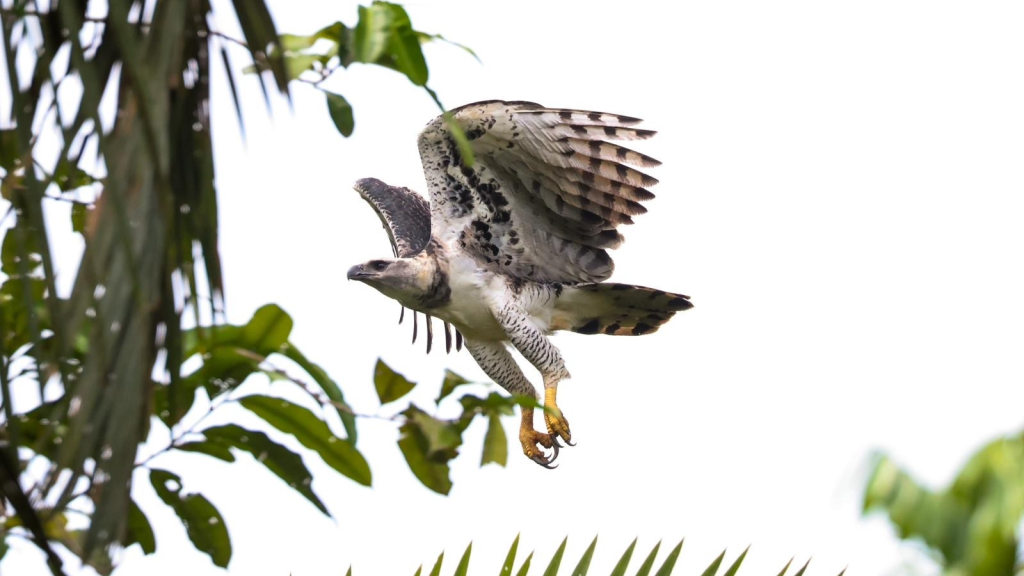
Despite their large size, harpy eagles are remarkably stealthy in flight. Their wings have evolved special adaptations that allow them to fly almost silently through dense forest canopies. This quiet approach helps them surprise their prey, making them incredibly effective hunters in their rainforest habitat. The leading edges of their wing feathers have serrated fringes that help to break up the flow of air, reducing noise as they fly.
They Have Incredible Eyesight
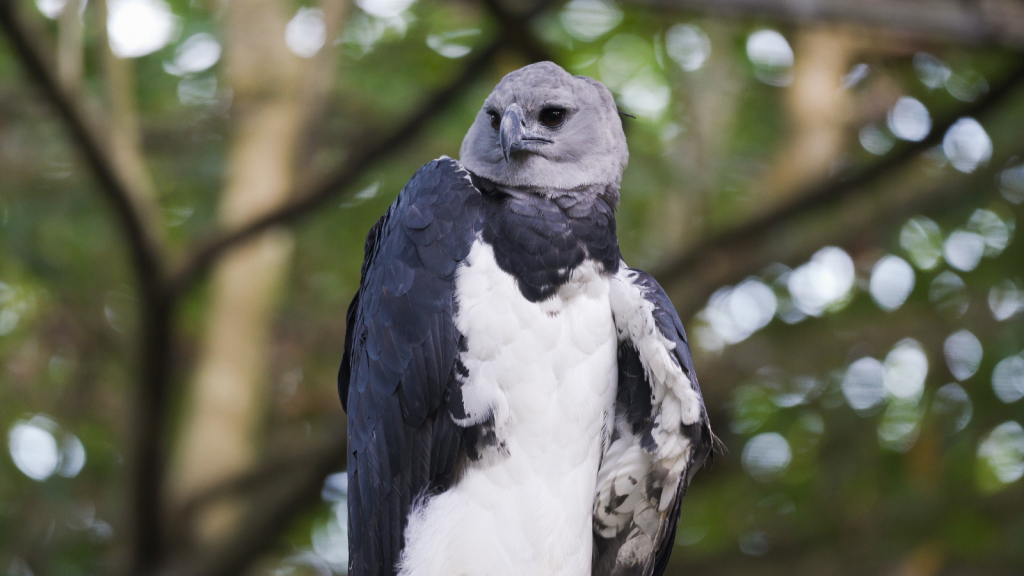
Like many birds of prey, harpy eagles possess exceptional vision. Their eyesight is estimated to be eight times sharper than that of humans, allowing them to spot potential prey from great distances. This keen vision, combined with their silent flight, makes them formidable predators in the complex rainforest environment. Their eyes also have a higher concentration of light-detecting cells, enabling them to see clearly in the dim light of the forest understory.
Harpy Eagles Mate for Life
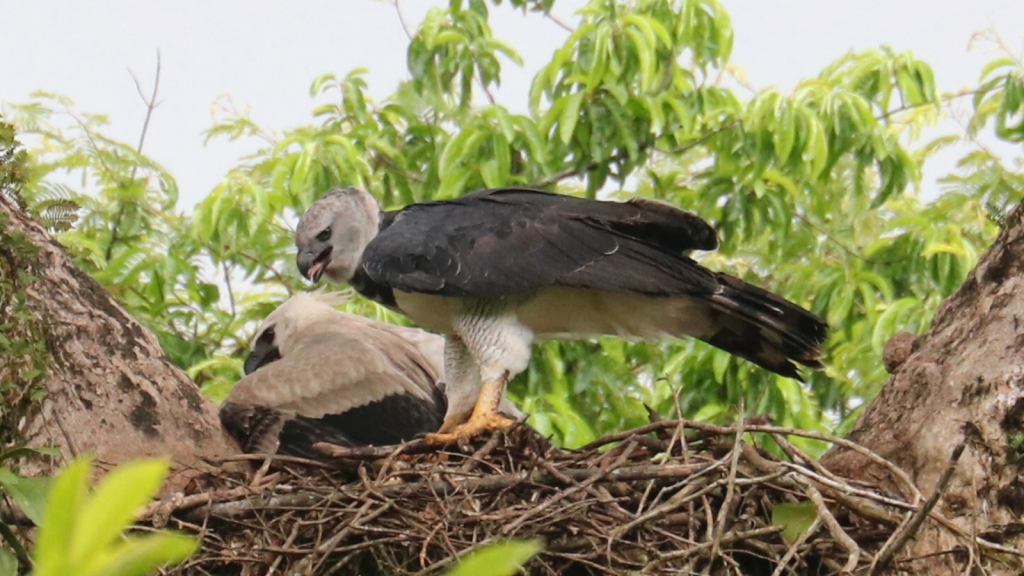
These majestic birds are known to form strong, lifelong pair bonds. Once a pair has mated, they typically remain together until one of them dies. This loyalty extends to their nesting habits, with pairs often returning to the same nest site year after year to raise their young. During courtship, pairs engage in impressive aerial displays, including synchronized flying and mid-air talon grasping.
They Build Massive Nests
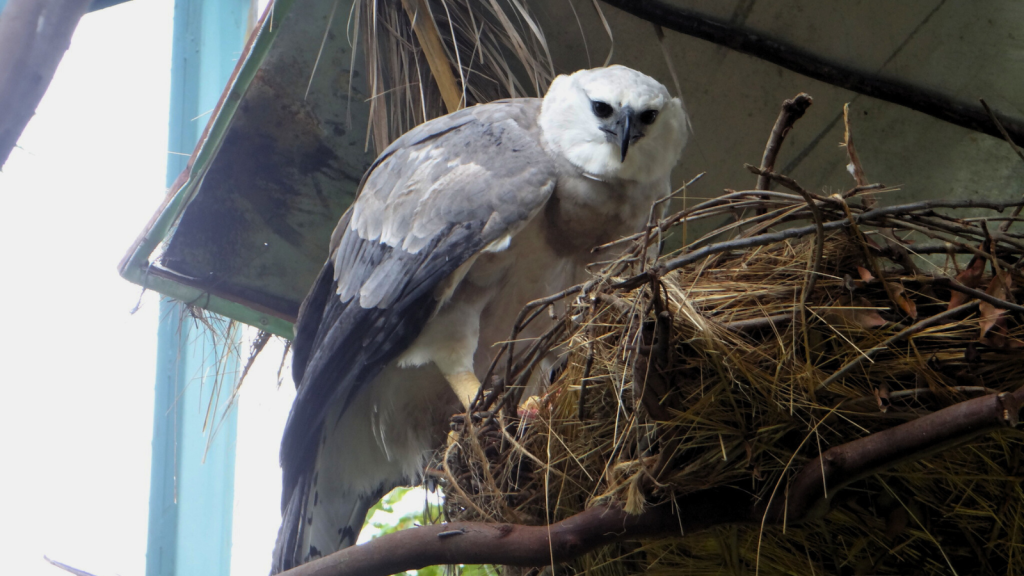
Harpy eagle nests are truly impressive structures. Typically built high in the canopy of emergent trees, these nests can measure up to 1.5 metres across and 1.2 metres deep. The birds often use the same nest for multiple breeding seasons, adding new materials each year, which can result in nests weighing up to 250 kilograms. These nests are so sturdy that they can support the weight of a human, though climbing to them is extremely dangerous and discouraged.
Their Breeding Cycle Is Unusually Long
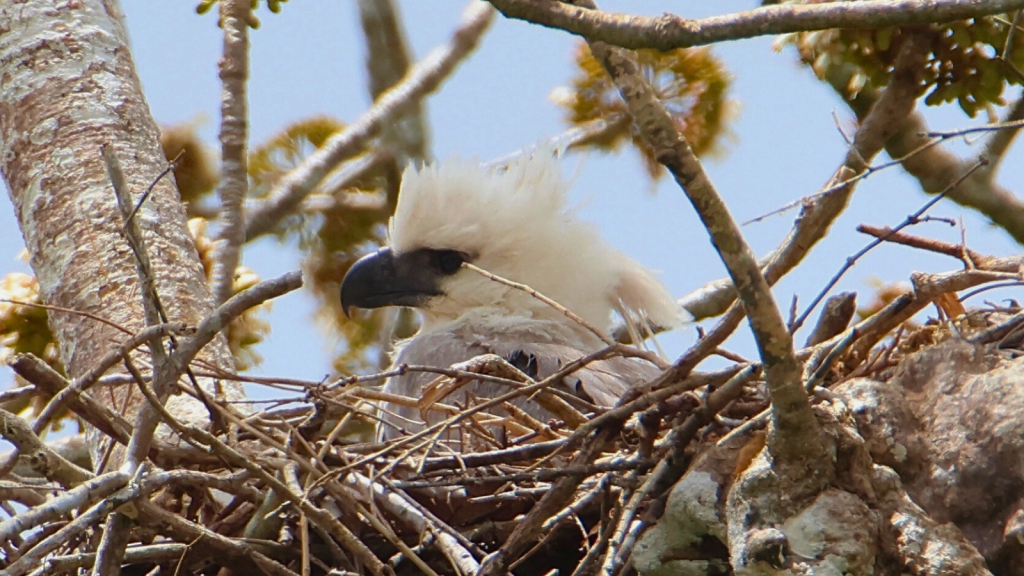
Harpy eagles have one of the longest breeding cycles of any bird species. From egg-laying to the point when a young eagle becomes independent can take up to two years. This extended period of parental care ensures that young harpy eagles are well-prepared for life in the challenging rainforest environment. During this time, the parents teach their offspring crucial hunting and survival skills through demonstration and practice sessions.
They Have a Unique Hunting Strategy
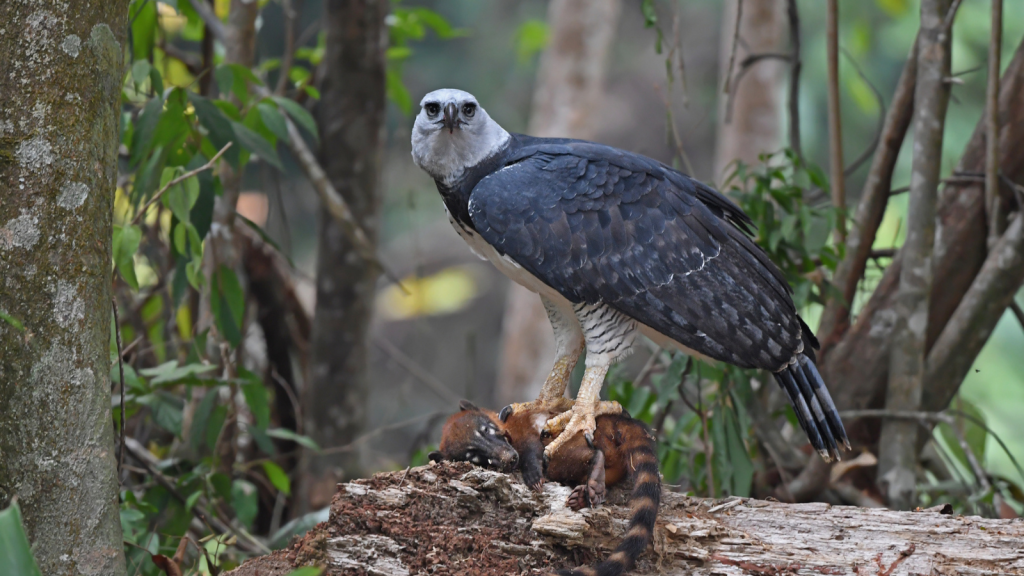
Unlike many other raptors that rely on soaring and diving to catch prey, harpy eagles are adapted for hunting in dense forests. They often perch motionless for hours, waiting for suitable prey to pass by. When they spot a target, they can fly through the forest at speeds of up to 50 miles per hour, deftly manoeuvring between trees to catch their quarry. Their short, broad wings and long tail provide the agility needed for rapid direction changes in tight spaces.They Play a Crucial Role in Rainforest Ecosystems
As apex predators, harpy eagles help maintain the balance of their forest habitats. By controlling populations of tree-dwelling mammals, they indirectly influence forest structure and plant diversity. Their presence is often considered an indicator of a healthy, intact rainforest ecosystem. By preying on species that might otherwise overpopulate and overgraze certain plants, harpy eagles help maintain the overall biodiversity of the forest.
Harpy Eagles Have Cultural Significance
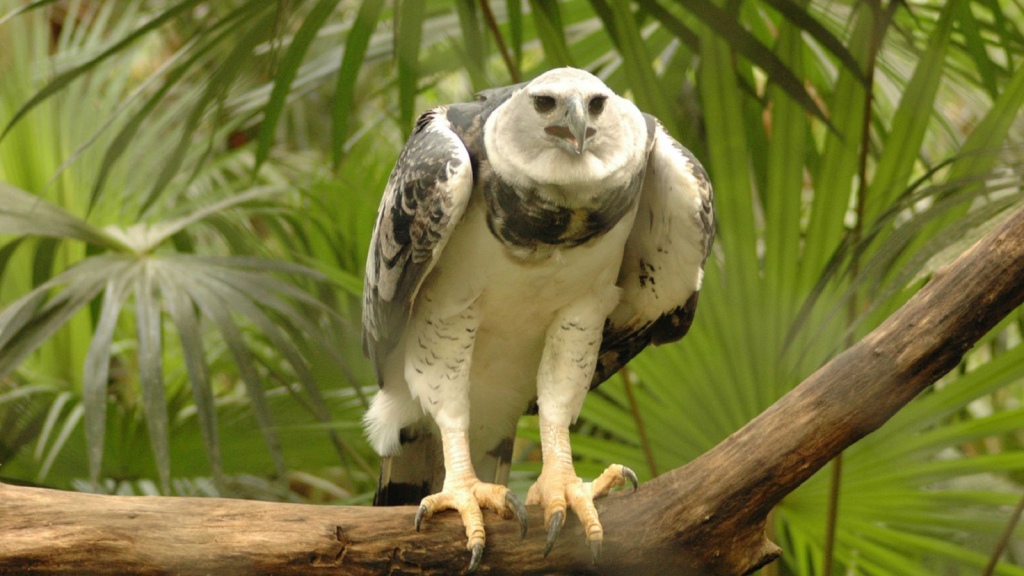
Many indigenous cultures in Central and South America revere the harpy eagle. It features prominently in folklore and traditional art, often symbolising strength and wisdom. In Panama, the harpy eagle is even the national bird, highlighting its cultural importance in the region. Some Amazonian tribes use harpy eagle feathers in ceremonial headdresses, considering the bird a powerful spiritual entity.
Their Population Is Under Threat

Despite their fearsome reputation, harpy eagles face significant threats from habitat loss and hunting. As rainforests are cleared for agriculture and development, these birds lose crucial nesting and hunting grounds. Conservation efforts are underway to protect remaining populations and their habitats. These initiatives include creating protected areas, educating local communities about the importance of harpy eagles, and implementing sustainable forestry practices.
They Have an Incredibly Strong Grip
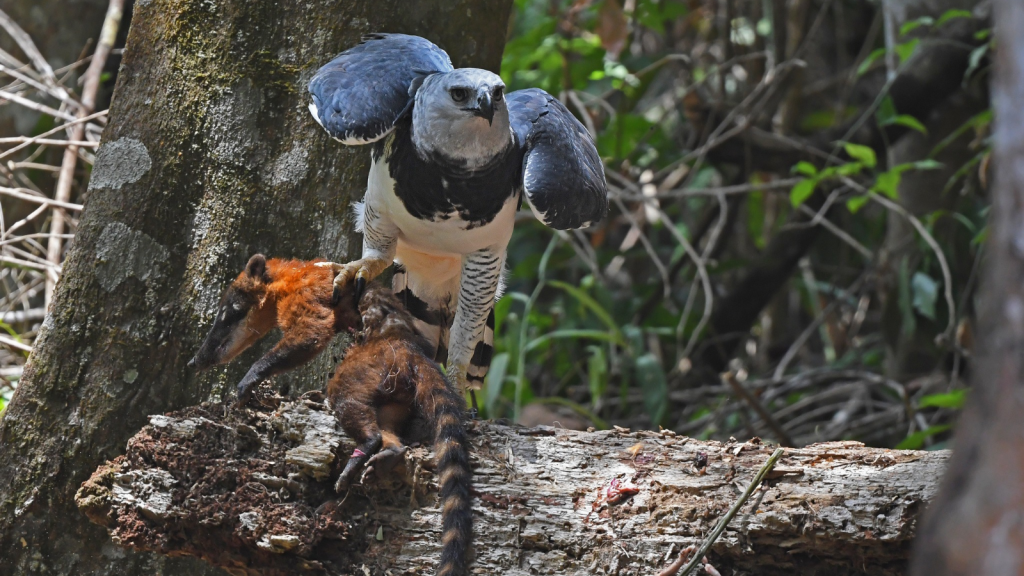
A harpy eagle’s grip is so powerful that it can break bones. With a grip strength estimated at 530 psi, they can easily crush the skulls of their prey. This strength, combined with their massive talons, allows them to carry prey weighing up to their own body weight. Their leg muscles are extraordinarily developed, making up about 25% of their total body weight.
Harpy Eagles Have Distinctive Facial Feathers

The arrangement of feathers on a harpy eagle’s face forms a unique facial disc. This disc helps to funnel sound to their ears, enhancing their already keen hearing. It also gives them their characteristic fierce expression, which has contributed to their mythical status in many cultures. The facial disc is reminiscent of that found in owls, although it serves a slightly different purpose in harpy eagles, primarily aiding in sound location rather than amplification.
They’re Named After Creatures from Greek Mythology
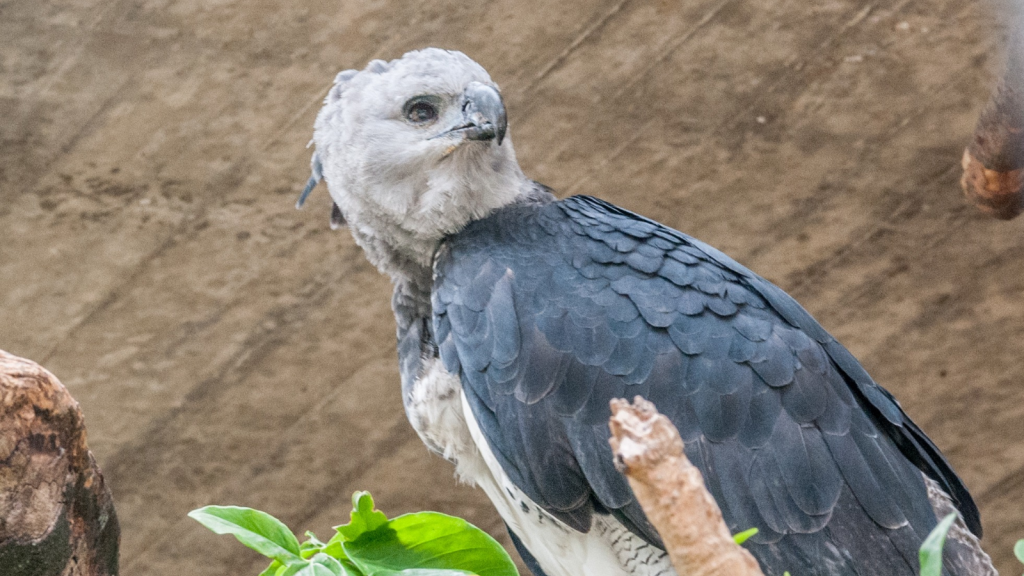
The harpy eagle’s scientific name, Harpia harpyja, comes from the harpies of Greek mythology. These were fierce, bird-like creatures with the head of a human. The harpy eagle’s imposing appearance and fierce hunting skills certainly live up to this mythological association. In some local languages, the harpy eagle is known by names that translate to “wind eagle” or “royal hawk,” further emphasizing its majestic status.
Becky is a fervent wildlife enthusiast and pet care expert with a diploma in canine nutrition. Her love for animals stretches beyond the domestic, embracing the wild tapestry of global fauna. With over a decade of experience in animal welfare, Becky lends her expertise to OutlandishOwl through insightful articles, captivating wildlife information, and invaluable guidance on pet nutrition. Her work embodies a deep commitment to understanding the intricate lives of animals and a passion for educating others on sustaining natural habitats. Becky's hands-on conservation efforts and her knack for translating complex dietary science into practical pet feeding tips make her an indispensable voice for creatures great and small.

